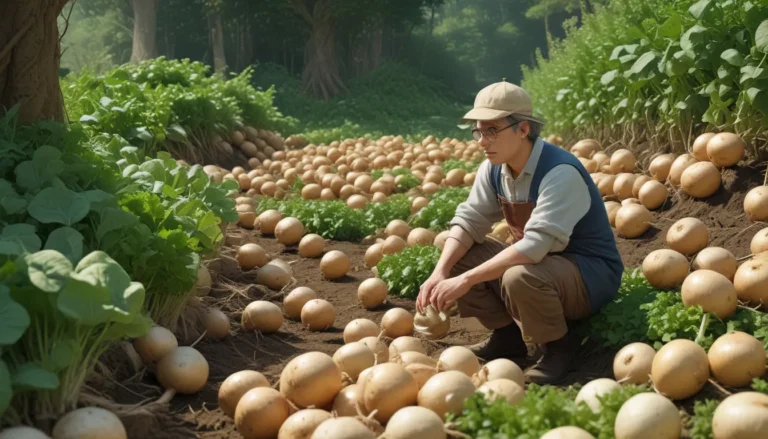Using Trap Crops to Safeguard Your Garden Against Insect Pests

Have you ever found that some plants in your garden seem to be irresistible to bugs, while others are left untouched? Just as kids are more drawn to Goldfish crackers than broccoli, insects have their plant preferences too.
If you’re looking to keep destructive pests away from your beloved crops, consider using trap crops. Trap cropping is an integrated pest management strategy that involves using decoy plants to lure harmful insects away from your main crops, making it easier to control their populations.
In this article, we’ll explore everything you need to know about trap crops and how to effectively use them in your garden. Here’s what we’ll cover:
What Are Trap Crops?
In the realm of trap cropping, certain plants are more appealing to pests than others. By strategically placing attractive crops in or around your garden, you can divert pests towards these decoys, safeguarding your vegetables, fruits, and flowers. Once the pests gather on the trap plants, they can be easily managed using insecticides or by physical removal.
Trap crops, also known as sacrificial plants or decoys, can be chosen from a wide variety of options as long as they are more enticing to pests than your main crops. This method not only reduces damage but also protects your overall yield.
Ready to give trap cropping a try? Before you start planting, here are a few key points to keep in mind.
How to Use Trap Crops
There are different methods to incorporate trap crops into your garden. You can place them on the perimeter or practice intercropping by planting them between rows. The choice of method depends on the type of pest you’re dealing with.
Perimeter traps are suitable for large fields or crops in blocks, ideal for preventing pests from entering your garden. On the other hand, intercropping works best for targeting pests that are strong fliers or dwell in the soil.
When deciding how many decoy plants to add, aim for a total number of traps that’s around 10 to 20 percent of your main crop plants. Starting the decoys early and monitoring pests are crucial steps for successful trap cropping.
Key Points to Remember:
- Start Early or Provide Something More Attractive: Ensure that the trap crops are available to pests earlier in the season or are more appealing to them compared to your main crops.
- Monitor and Identify Pests: Different pests have varying preferences, so choose trap crops that effectively attract the specific insects you’re targeting.
- Keep Your Decoys Healthy: Maintain the health of trap crops by providing adequate water, fertilizer, and light.
- Eradicate the Insects: Remove or destroy pests that gather on decoy plants to prevent them from spreading to your main crops.
By following these guidelines and combining trap cropping with other pest management strategies like crop rotation, you can effectively protect your garden from harmful insects.
Trap Plant Types
Choosing the right trap crop involves thoughtful companion planting. Select plants that are more attractive to pests while serving as effective decoys for specific insects. For instance, marigolds can be used to protect various vegetable crops from parasitic nematodes.
When deciding on trap crop species or cultivars, consider their relationship to the plant you’re trying to protect and the pests you aim to target. From onions and garlic to legumes and hot peppers, there are numerous options available to lure specific insects away from your main crops.
Remember to conduct thorough research on trap crop recommendations for different crops to make informed planting decisions. While some trap plants may be edible or ornamental, others may serve a singular purpose as decoys for pests.
Benefits and Challenges
Incorporating trap crops into your garden offers several benefits, including reduced pesticide use, preserved beneficial insects, increased biodiversity, and overall environmental conservation. By concentrating pests in specific locations, trap crops can attract beneficial insects that help maintain a healthy ecosystem in your garden.
However, using trap crops requires careful management and monitoring to prevent these decoy plants from becoming breeding grounds for pests. It’s essential to stay informed about the pests affecting your crops and to provide proper care to trap crops to ensure their effectiveness.
To reap the rewards of trap cropping while minimizing challenges, consider the following strategies:
- Learn about Specific Pests: Educate yourself about the insects that may affect your crops and choose trap crops accordingly.
- Start Early and Monitor: Begin trap cropping early in the season and regularly check for pest activity to take timely action.
- Combine with Other Pest Management Methods: Integrate trap cropping with other strategies like crop rotation for comprehensive pest control.
In conclusion, trap cropping can be a valuable tool in your gardening toolkit to protect your plants from insect pests. By strategically selecting decoy plants, you can lure pests away from your main crops and maintain a healthy garden ecosystem.
Have you experimented with trap cropping in your garden? Share your experiences in the comments below! While you’re here, explore other beneficial cropping methods to enhance your gardening practices.
Remember, effective pest management requires creativity, diligence, and a deep understanding of your garden ecosystem. By utilizing trap crops and other sustainable strategies, you can create a thriving garden environment that flourishes while keeping pests at bay. Happy gardening!





